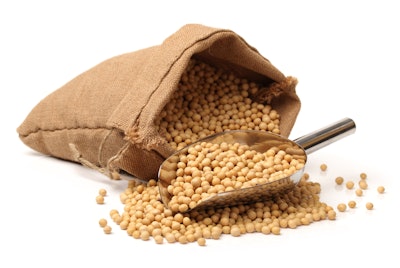
Soybean meal is one of the most common protein sources in poultry diets, but without proper invention or quality assurance, it can have negative effects on poultry performance and return on investment (ROI).
“We have many different ingredients in the market, but we usually choose based on price or just availability,” explained Gabriela Cardoso, Ph.D., Novus poultry solutions manager for the Americas.
“I want everyone to understand that each ingredient may have some antinutritional factors. Sometimes we cannot avoid that ingredient, but if we know the nutritional factor or the negative impacts of that ingredient for an animal, we can use some other feed additive, products or process that will help an ingredient be more available and less harmful to the animal.”
An antinutritional factor is a molecule that can impair the digestibility and normal physiology of a bird.
Antinutritonal factors
Soybean meal can contain several antinutritional factors, such as trypsin inhibitors, which reduce nutrient utilization or food uptake in poultry. Trypsin inhibitors inhibit endogenous trypsin activity, reducing amino acid digestibility and performance.
According to a poster presentation (Schulz et al. 2024) at the 2024 Poultry Science Association meeting, trypsin inhibitors were found in the majority of soybean meal samples analyzed by near-infrared spectroscopy. This indicates a need to monitor trypsin inhibitor content in soybean meal to manage variations of the antinutritional factor in the poultry feed ingredient.
“It’s an incredible ingredient and, at least in America, one of the biggest sources of protein for poultry,” Cardoso said. “Although it’s a very good ingredient, we need to be aware. The process that soybean meal undergoes will influence its antinutritonal factors.”
The process for analyzing antinutritional factors is unique to each ingredient. For soybean meal, this usually involves the analysis of soluble proteins and the urease reaction.
“I don’t want to demonize soybean meal because I think it’s a great ingredient, but we need to be aware and understand the quality of soybean meal we have available,” she added.



















